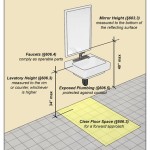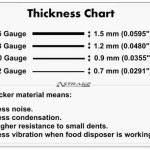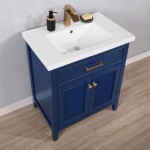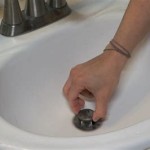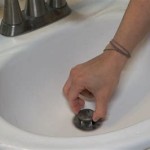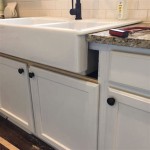How to Clear a Clogged Sink Drain
A clogged sink drain is a common household problem that can be frustrating and inconvenient. The good news is that in most cases, you can clear the clog yourself with a few simple tools and techniques. This article will guide you through the steps to effectively unclog your sink drain, saving you time, money, and the hassle of calling a plumber.
1. Identify the Cause of the Clog
Before attempting to unclog your sink drain, it's crucial to understand the root cause of the blockage. This will help you choose the most effective method for clearing it. Common causes of sink clogs include:
- Hair and soap scum: These are common culprits, particularly in bathroom sinks.
- Food particles: Leftover food scraps from kitchen sink dishes can accumulate and obstruct the drain.
- Grease and oil: These substances solidify as they cool, forming a sticky barrier in the drainpipe.
- Foreign objects: Small items like jewelry, buttons, or even toys can accidentally fall down the drain and cause a blockage.
Once you have identified the likely cause of the clog, you can proceed with the appropriate solution.
2. Attempt a Simple Plunger Solution
A plunger is an essential tool for unclogging drains. The suction created by the plunger can dislodge blockages and clear a clogged sink drain. Here's how to use a plunger effectively:
- Fill the sink basin with water: Partially fill the sink with enough water to cover the plunger's cup completely. This creates a seal that improves suction.
- Position the plunger: Center the plunger directly over the drain opening, ensuring a firm, airtight seal. This is crucial for generating enough force to dislodge the clog.
- Push and pull the plunger: Apply steady, forceful pressure to the plunger, pushing down and pulling up repeatedly. This creates a vacuum that forces the clog to break apart or move down the drainpipe.
- Repeat the process: If the clog is stubborn, continue plunging for several minutes until you feel a give or hear a gurgling sound, indicating that the clog has cleared.
If the plunger fails to unclog the sink drain, you can move onto other methods.
3. Employ a Drain Snake
A drain snake, also known as a drain auger, is a flexible cable with a hook or spiral at the end. This tool is effective for removing stubborn clogs, particularly those caused by hair and debris. Follow these steps to use a drain snake:
- Insert the snake into the drain: Carefully feed the drain snake down the drainpipe, twisting it as you go to push it through the clog. You may need to apply some force to overcome resistance.
- Rotate the handle: While pushing the snake down the drain, turn the handle clockwise to feed the hook or spiral into the clog. This helps to break up the blockage and pull it out.
- Remove the clog: Once you feel the snake encounter the clog, continue rotating the handle and slowly withdraw the snake, bringing the clog with it.
- Flush with water: After removing the clog, run the hot water for a few minutes to flush any remaining debris from the drainpipe.
A drain snake is a powerful tool, but be sure to use it carefully to avoid damaging the drainpipes.
4. Consider Chemical Drain Cleaners
Chemical drain cleaners can be effective for dissolving clogs caused by hair, grease, and soap scum. However, these cleaners are harsh and can be dangerous if used improperly. They can also damage your pipes over time. If you decide to use a chemical drain cleaner, follow these precautions:
- Read the instructions carefully: Always follow the manufacturer's instructions for safe and effective use.
- Wear protective gear: Use rubber gloves, eye protection, and ventilation to protect yourself from harmful fumes.
- Use with caution: Pour the cleaner slowly and let it sit for the recommended time. Avoid pouring it directly onto the drain stopper, as it can cause damage.
After using a chemical drain cleaner, flush the drainpipe with hot water for several minutes to remove any residue. If the clog persists, it's best to consult a professional plumber.
5. Prevent Future Clogs
Preventing clogged drains is essential for maintaining a smoothly functioning plumbing system. Here are some tips to avoid future blockages:
- Use a drain strainer: A drain strainer catches hair, food particles, and other debris, preventing them from clogging the drainpipe.
- Avoid pouring grease and oil down the drain: These substances solidify and create blockages. Instead, dispose of them in a sealed container.
By following these preventive measures, you can significantly reduce the likelihood of encountering clogged drains in the future.

How To Unclog A Sink The Experts Simple Steps Drain

How To Unclog A Sink The Right Way

How To Clear A Clogged Drain Reviews By Wirecutter

How To Unclog A Bathroom Sink Hana S Happy Home

5 Natural Ways To Unclog A Bathroom Sink Hiller How

How To Unclog A Sink

4 Simple Drain Cleaning Tips Cliff Bergin

How To Unclog A Bathroom Sink Hana S Happy Home

How To Unclog A Sink Herrmann Services
How To Unclog A Sink 4 Easy Ways

